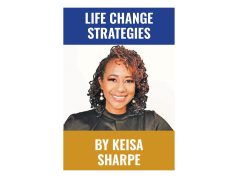 Statistics can be misleading. This is especially true for the unemployment numbers for September. Now that the official unemployment rate is below 6 percent, many people believe the economy has made a substantial recovery.
Statistics can be misleading. This is especially true for the unemployment numbers for September. Now that the official unemployment rate is below 6 percent, many people believe the economy has made a substantial recovery.
On the surface, this appears to be the case. The seasonally adjusted rate was 5.9 percent for the month. This contrasts sharply with the rate of 7.2 percent one year ago.
The dark side to the September figure is the large number of people who are still unemployed or underemployed. They are not counted in the official rate reported in the news media.
The quandary lies in the measurement of unemployment. The “official” rate reported by the Bureau of Labor Statistics (BLS) includes only those who are not working and have sought employment within the previous four weeks.
People who want to work, are available for employment, and have looked for employment in the past twelve months are not counted as unemployed if they have not searched for employment within the previous four weeks. They do not believe jobs are available for them so they quit looking. When these are counted, the unemployment rate rises to 6.4 percent.
Another category of unemployed are those whom the BLS labels the “marginally detached.” They are discouraged workers who cited other reasons for not seeking employment in the prior four weeks. Including them in the calculation increases the rate to 7.3 percent.
A final group missing from the official unemployment rate is people who want to work full-time but have been forced to take part-time employment. They have been unable to find full-time employment.
This is a large number of people. There are currently 54 percent more part-time workers than when the recession began in December 2007. The BLS notes that when this group is added into the ranks of the unemployed, the rate becomes 11.8 percent for September, exactly twice the official rate.
The BLS calls this the U-6 rate. This is the broadest measure of labor underutilization. It has received increased attention in recent years, primarily because it provides a more complete picture by including discouraged and underemployed workers. A number of labor experts contend it would be more appropriate to focus on it rather than the more restrictive official rate.
Wayne Curtis, former superintendent of Alabama banks, is a retired Troy University business school dean. Email him at wccurtis39@gmail.com.


